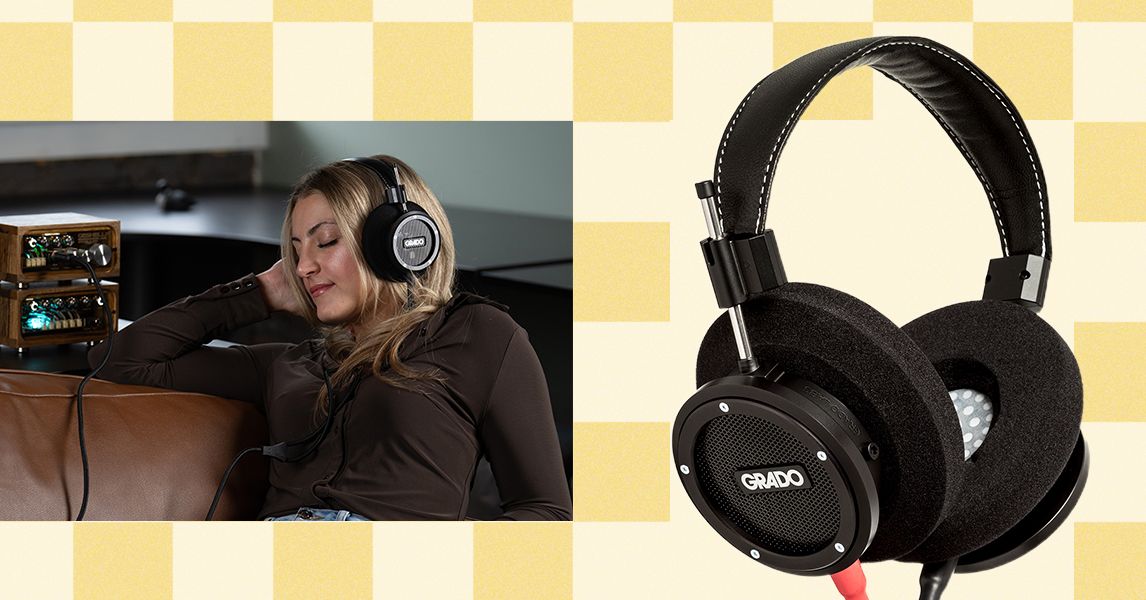Tech
Looking for Softer Sheets? These Bamboo Sheets Are the Answer

Comparing Our Favorite Bamboo Bedding
Terminology to Know When Shopping
Confused by the terms used to describe bamboo bedding? Here’s a quick breakdown.
Bamboo type: You’ll see bamboo rayon, viscose, or lyocell listed for the bamboo, which explains what method was used for turning the bamboo into fibers that could become sheets. Rayon is the cheapest, while viscose is a slightly better production process, and lyocell is the most ideal process (but still not a perfect one, and usually the most expensive).
Certifications: Some companies will label bamboo sheets as organic, using certifications like Oeko-Tex. You can learn more about organic certification terms here to understand what they each mean, and our thoughts on organic bamboo in our FAQs below. You might also see FSC-certified, which means it was sourced through sustainable forests certified by the Forest Stewardship Council.
Honorable Mentions
Cariloha Classic Bamboo Sheets for $239: Cariloha’s Classic Bamboo Sheets have a twill weave, which has a diagonal thread pattern and doesn’t sound as soft as a sateen weave that has a three-over-one pattern. But these sheets still felt super soft, and the softness difference compared to the pricier Retreat Sheets ($339) was minor for such a big price difference. There’s no corner straps, though.
Cariloha Retreat Bamboo Sheets for $339: These sheets are super soft and silky and use lyocell fabric to be more sustainable. They’re a similar softness to the brand’s cheaper sheets, but if you want to prioritize eco-friendly sheets, lyocell is a good option (though not a perfect carbon-neutral solution). I also really like the included straps, but you can find those on cheaper sets like the Luxome sheets I recommend above.
Ettitude Luxe Sheet Set for $470: These sheets are fantastically soft and use a combination of bamboo lyocell and bamboo “biochar” to make them antifungal and odor-resistant. They ran a little warm for my liking, but if you’re looking for something to keep odors and fungi away, these could be the splurge for you. Ettitude previously called these Airy+ instead of Luxe, but both use a combination of lyocell and biochar.
Honeydew Sheets for $230: These sheets felt a little stiff at first but softened up a bunch after washing. They also come with a securing strap, so they’re a good option for taller mattresses. The only downside is that they’re only available in two colors, but if you want white or a nice dark gray, you’re in luck.
My Sheets Rock the Regulator Sheet Set for $199: These sheets are super soft. They promise to regulate your temperature, but I found myself waking up a little too warm some nights. If you aren’t a hot sleeper, these are overall soft, comfortable sheets to sleep on.
Pom Pom at Home Bamboo Sateen Sheet Set for $368: These are good bamboo sheets, but for the price, we were more impressed by others we tested.
Quince Linen Bamboo Bundle for $255: This set would have been a pick if it were still available. It’s a fantastic combination of linen and bamboo that gets the best of both worlds: the softness and cool touch of bamboo with the structure and airflow of linen. It’s a great pick for hot sleepers—if it resurfaces, buy it!
Quince Bamboo Sheet Set for $130: Quince makes some solid sheets, and these bamboo ones are super soft. They’re a little heavy for me as a hot sleeper, but otherwise come in a nice range of colors and have an Oeko-Tex certification, meaning no harmful chemicals were used. Quince also says the bamboo is organic, but there aren’t any certifications to confirm that (more below on our thoughts on organic bamboo bedding).
Sunday Citizen Bamboo Sheet Set for $109: WIRED reviewer Louryn Strampe found these sheets to be super soft and fantastic to sleep on. But even with the claimed deep pockets, they tended to pop off her mattress, and other picks like Luxome’s sheets feature straps that will avoid that problem.
FAQs
What Types of Bamboo Are There?
There’s a few different terms you might see when describing the bamboo fibers that make up a set of bamboo sheets. Bamboo isn’t naturally a soft fiber, so it goes through a harsh chemical process to break it down and turn it into fibers that can be woven into sheets. Each different name lets you know what kind of process was used and what kind of chemicals (and chemical off-put) were involved.
Bamboo rayon and bamboo viscose are sometimes used interchangeably, though they shouldn’t be since they aren’t exactly the same. Rayon is likely a term you’ve seen before, since it’s a general term used for fabric made from regenerated cellulose. Bamboo rayon usually suggests that it’s semi-synthetic and might not be 100 percent bamboo. Meanwhile, bamboo viscose also uses bamboo cellulose as its base, though it has a slightly different process. Viscose is another type that isn’t limited to bamboo. Just about every sheet I’ve tested claims to be 100 percent bamboo viscose.
Bamboo lyocell is the best of the three, because lyocell has a closed-loop process, which means that almost all of the chemicals used to make more lyocell get reused rather than dumped. Lyocell is a fantastic-quality fabric that makes for a great cooling sheet, so it’s a term to look for if you want to stay cool while you sleep.
Are Bamboo Sheets Cooling?
While bamboo is absolutely cool to the touch when you first climb into bed, I often find that bamboo bed sheets can warm up quite a bit throughout the night. Some companies claim that the bamboo fibers can help regulate your temperature and wick away moisture. As a hot sleeper, I haven’t found this true with every set of bamboo sheets. Some have a weave that’s too heavy to keep me cool on hot nights, since no amount of promised moisture-wicking can replace good airflow to keep you cool. There are a few sets of bamboo bed sheets I recommend below that keep me cooler than others, but I recommend visiting our guide to the Best Cooling Sheets if you want to consider all kinds of bed sheets that could keep you cool, from bamboo to cotton percale and even sheets with phase-change material (or PCM) blended in.
Can Bamboo Sheets Be Organic?
Unlike cotton fabrics, which have the Global Organic Textiles Standard or GOTS, there’s no overarching certification to verify if bamboo is organically sourced. Many sheet makers will say the bamboo is organic, but with no main certification to confirm this, it’s hard to say without a doubt that any bamboo sheets are fully organic.
Instead, you’ll usually see Oeko-Tex certifications, which confirm that no harmful substances were used, and sometimes you’ll see Forest Stewardship Council or FSC certifications, which confirm the bamboo was sustainably sourced. Hopefully a primary bamboo organic certification will come out in the future to better inform bamboo textile shoppers. You can learn more about existing organic certifications in our guide here.
Does Thread Count Matter?
Bamboo sheets have a thread count, just like cotton sheets, describing how many threads are in a square inch of the fabric. You don’t want too high of a thread count—anything over 800 is purely marketing-speak, and higher thread counts can mean shorter, lower-quality fibers. It’s better to have fewer fibers that are longer and stronger.
Bamboo made into rayon, viscose, and lyocell can be manipulated into a long thread more easily than cotton, of course, so we haven’t seen the crazy-high thread counts listed on bamboo sheets. Many of these sheets are also a sateen weave, which is a three-over-one thread style, leading it to feel softer but not be as breathable. It’s not always so simple as sateen will make you hot, of course; our favorite cooling bamboo sheets from Ettitude have a sateen weave, so it depends on several factors.
The takeaway? Don’t worry about thread count. Focus on type of weave and reviews (like ours!) to get a better idea of whether a set of bamboo sheets (or any other kind of sheet) will suit your sleep needs.
How Does WIRED Test Bamboo Sheets?
For our bamboo sheets guide, I compared our picks both overnight and side by side for softness, cooling properties, and price. Each set of sheets was slept on anywhere between two and seven nights, depending on how it performed, and was washed multiple times to check for pilling or design flaws. I’m a hot sleeper living in Southern California, with my bedroom on the third floor of my home, so it’s been easy to discover if sheets can’t keep me cool all night long. I also looked at each sheet’s quality in reference to the price to see what sheet sets were really worth investing in after testing each one.
How Does WIRED Obtain Sheet Samples? What Happens to Samples After Testing?
All sheets in this guide were obtained as testing samples from companies. We obtain these sheets with no obligation to cover or promises for what coverage could look like. When testing is complete, the top picks are held onto for long-term testing, while the rest are donated locally.
Power up with unlimited access to WIRED. Get best-in-class reporting and exclusive subscriber content that’s too important to ignore. Subscribe Today.
Tech
Grado’s Signature S750 Headphones Sound Modern but Feel Like the ’70s

The friction-pole mechanism for headband adjustment is no less agricultural, for all its familiarity where Grado headphone designs are concerned. And while the detachable cable is a fair bit more flexible than some older Grado models, that’s not the same as saying it’s meaningfully flexible. If there’s a more willfully unhelpful length of cable in all of headphone-land, I’ve yet to encounter it.
On the subject of the cable: Grado provides 180-ish centimeters of it with a 6.3-mm termination at the end. When you’re charging this sort of money for headphones, it’s not outlandish to imagine your customer might have a device that accepts a balanced connection. Frankly, why there isn’t a choice of cables in the packaging is, frankly, beyond me. It’s something that the overwhelming majority of Grado’s rivals provide as a matter of course, and though the company’s website suggests there are forthcoming cable options “including a variety of lengths, as well as balanced terminations such as 4-pin XLR and 4.4mm,” these have been “forthcoming” for quite some time now, and will have a cost attached.
Photograph: Simon Lucas
I’m in no position to doubt the effectiveness of the “B” ear cushions where sound quality is concerned. After all, the Signature S750 sound superb, and Grado suggests the cushion design is a contributing factor. What I do feel qualified to say, though, is that the raw-feeling foam of the ear cushions is not especially comfortable, and that it retains and returns the wearer’s body heat with something approaching glee. “Premium” and “luxurious” are not words that apply.
Ultimately, it depends on what your priorities are. There’s certainly no arguing with the way the Signature S750 sound. They’re uncomplicatedly impressive and periodically quite thrilling to listen to, depending on the mix. But unless you’re one of those hair-shirt hi-fi fundamentalists from back in the day, one of those listeners who somehow doesn’t believe outstanding sound quality is valid unless there’s some suffering attached, there may well be too many shortcomings to overlook when it comes to these Grados. “Hand-assembled in Brooklyn, USA” notwithstanding.
Tech
The Future of EVs Is Foggy—but California Still Wants More of Them

It’s been a weird and confusing few weeks for the auto industry—especially for those who hoped to see more batteries on the road in the coming decade.
Just this month: Ford announced a retrenchment in its EV business, canceling some battery-powered vehicle plans and delaying others; the European Commission proposed to backtrack its goal to transition fully to zero-emission cars by 2035; the US government said it would loosen rules that would have required automakers to ratchet up the fuel economy of their fleets. BloombergNEF projects 14 million fewer EVs will be sold in the US by 2030 than it did last year—a 20 percent drop.
What has not changed, it seems, is California’s interest in shifting to cleaner transportation. “The state is doubling down on our zero-emission vehicle deployment, providing market certainty, and continuing to lead on clean transportation regardless of policy reversals elsewhere or shifts by automakers,” Anthony Martinez, a spokesperson for Governor Gavin Newsom, wrote in a statement to WIRED. He said the governor’s “commitment to accelerating California’s clean transportation transition hasn’t changed.”
In 2020, Newsom became one of the first lawmakers in the world to commit to full electrification when he signed an executive order directing state agencies to create rules that would ban the sale of new gas-powered cars in the state by 2035. Those rules eventually aimed to ratchet up the share of battery-electric vehicles, with an ultimate goal of a mix of pure EVs and plug-in hybrids. (The PHEVs could only account for about 20 percent of sales.) Several other states, including Massachusetts, New York, Oregon, and Washington State, pledged to do the same.
Earlier this year, the GOP-led Congress revoked, through legislation, California’s power to set its own clean air regulations. The state responded with a lawsuit, which is still being argued. Meanwhile, Newsom signed another executive order directing state agencies to further the state’s electrification goals in other ways.
Now auto industry experts and players say the state’s determination to push through policy and market changes to meet its now half-decade-old goal may be overly ambitious.
“Getting to 100 percent might be challenging,” says Stephanie Valdez Streaty, the director of industry insights at Cox Automotive. “There are a lot of headwinds.”
A coalition of California business groups have argued that the state’s goals even for next year—a requirement that 35 percent of model year 2026 vehicles sold are zero-emission—aren’t realistic, and that California should push back its goals for zero-emission new car sales. (Enforcement of the rules is paused while the larger battle with US Congress plays out.) Zero-emission cars accounted for 21 percent of the overall annual state new car sales as of the fall, according to the California New Car Dealers Association, well below the 35 percent goal. “The timeline needed to be adjusted,” says the group’s president, Brian Maas.
Tech
Top 10 IT leadership interviews of 2025 | Computer Weekly

Artificial intelligence (AI) has been the biggest talking point for IT leaders in 2025 – both the emerging capabilities and opportunities from the technology, and the challenges of implementing it at scale and in a way that delivers measurable benefits.
For the digital, data and technology leaders that Computer Weekly is privileged to talk to every week, building AI into their wider strategies and managing often over-hyped expectations just adds to the difficulties of one of the most important roles in any modern organisation.
All of that is taking place while they need to keep a tight rein on costs in a still difficult economy, and juggle skills shortages, talent development and ensuring cyber security. So, how well are they doing?
Computer Weekly gets access to some of the top technology leaders in the world – and the details they share make fascinating reading for anyone looking to develop and implement an IT strategy to improve their business, support employees and enhance their careers.
Here are Computer Weekly’s top 10 interviews with IT leaders in 2025:
The BBC’s research and development (R&D) arm serves a public purpose, which, according to director Jatin Aythora, is to make some of the technologies and inventions it creates available for free or at a really low cost. Aythora sees his job as helping to achieve technical breakthroughs that the news and media industry can benefit from, which he says BBC R&D has done for many years. Computer Weekly talks to him about self-belief and learning from different industries
The UK mapping service has moved on a long way from paper maps as it now looks to use AI to understand, interpret and derive insights from geographical data. CTO Manish Jethwa has a career-long passion for turning geographical data into useful insight, and he’s leading the organisation’s development of next-generation geospatial technologies.
As a technologist who also runs corporate operations, Thomson Reuters’ CTO believes her tech background gives her a unique edge as the business information group looks to transform its products with AI. That’s why she’s on a mission to use digital systems to transform internal processes and customer services.
Richard Masters, vice-president of data and AI at Virgin Atlantic, is an expert in enterprise data, but his career began somewhere different – space. Before moving into analytics, Masters completed a PhD in astrophysics at the University of Oxford. He is now applying his expertise in astrophysics to the nitty-gritty details of using AI to improve customer experience.
The vehicle recovery specialist is looking to AI and connected vehicle technology to enhance customer experience and get motorists back on the road in the shortest possible time. Group CIO Antony Hausdoerfer is driving the plan for digital transformation.
Digital media is core to engaging nearly two billion fans of Premier League football around the world, with data analytics and AI playing an ever-more important role. For Alexandra Willis, director of digital media and audience development at the organisation that runs top-level club football in England, the priority is to establish data-enabled experiences that keep fans just as engaged and entertained off the pitch.
Among the questions a head of technology may ponder are: what does it mean to be innovative, and, perhaps, what technology can be used to drive an innovation strategy? Given the main way people tend to place bets with Bet365 is via its mobile app, Alan Reed, head of platform innovation at Bet365’s Hillside Technology platform, talks to Computer Weekly about how generative AI changes the way people interact with computers.
Kate Balingit has been leading the digital health initiative at Mars Pet Nutrition, reporting to the company’s pet care CIO, where she is focused on commercialising and deploying artificial intelligence through well-known pet food brands such as Pedigree, Iams, Sheba and Whiskas. She talks to Computer Weekly about making AI relevant across its brands to support pet health.
Dan Keyworth, director of business technology at McLaren Racing, says his role involves running the tech at the sharp end of Formula One, all the IT infrastructure that must be deployed to Grand Prix races, and the IT that keeps the business of McLaren Racing on track.
The world of performing arts is in a completely different universe compared to the bits, bytes and IT infrastructure that Keith Nolan and the IT team at Royal Ballet and Opera spend their work time in. He talks about how IT lowers costs and helps power stage innovations for world-class performances.
-

 Business1 week ago
Business1 week agoHitting The ‘High Notes’ In Ties: Nepal Set To Lift Ban On Indian Bills Above ₹100
-

 Business1 week ago
Business1 week agoStudying Abroad Is Costly, But Not Impossible: Experts On Smarter Financial Planning
-

 Business1 week ago
Business1 week agoKSE-100 index gains 876 points amid cut in policy rate | The Express Tribune
-

 Sports7 days ago
Sports7 days agoJets defensive lineman rips NFL officials after ejection vs Jaguars
-

 Business4 days ago
Business4 days agoBP names new boss as current CEO leaves after less than two years
-

 Fashion4 days ago
Fashion4 days agoIndonesia’s thrift surge fuels waste and textile industry woes
-

 Tech1 week ago
Tech1 week agoFor the First Time, AI Analyzes Language as Well as a Human Expert
-

 Entertainment7 days ago
Entertainment7 days agoPrince Harry, Meghan Markle’s 2025 Christmas card: A shift in strategy

















